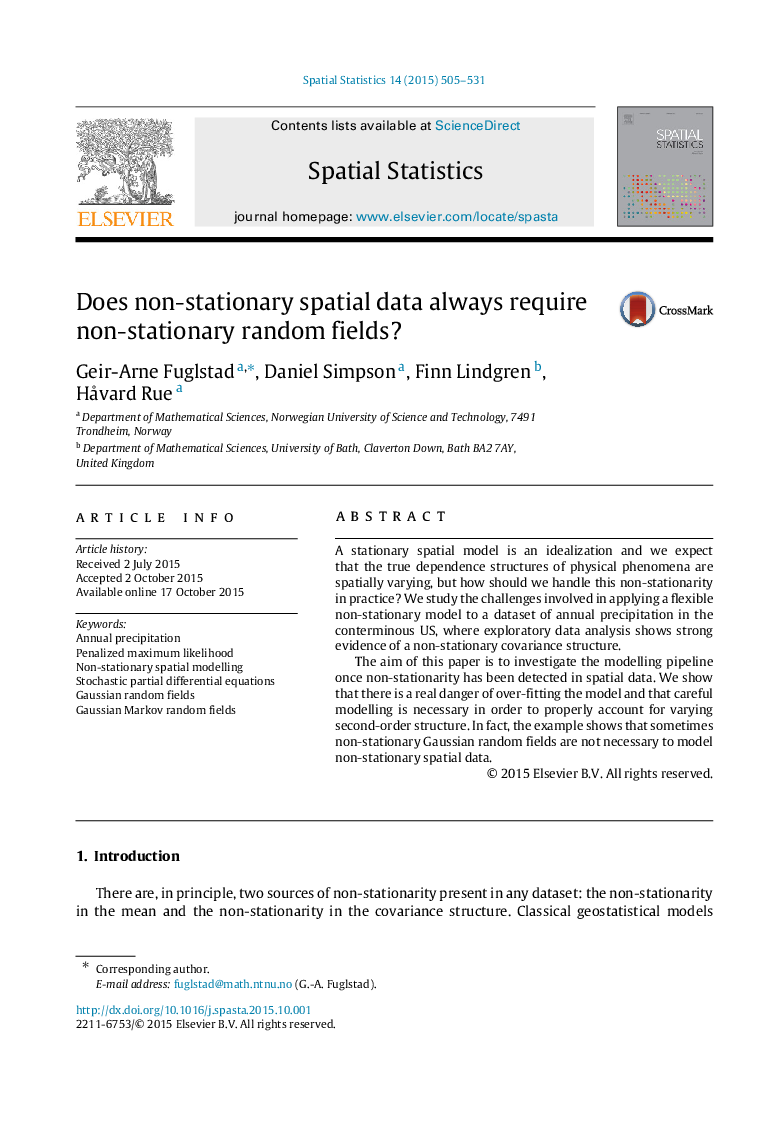| Article ID | Journal | Published Year | Pages | File Type |
|---|---|---|---|---|
| 1064496 | Spatial Statistics | 2015 | 27 Pages |
A stationary spatial model is an idealization and we expect that the true dependence structures of physical phenomena are spatially varying, but how should we handle this non-stationarity in practice? We study the challenges involved in applying a flexible non-stationary model to a dataset of annual precipitation in the conterminous US, where exploratory data analysis shows strong evidence of a non-stationary covariance structure.The aim of this paper is to investigate the modelling pipeline once non-stationarity has been detected in spatial data. We show that there is a real danger of over-fitting the model and that careful modelling is necessary in order to properly account for varying second-order structure. In fact, the example shows that sometimes non-stationary Gaussian random fields are not necessary to model non-stationary spatial data.
